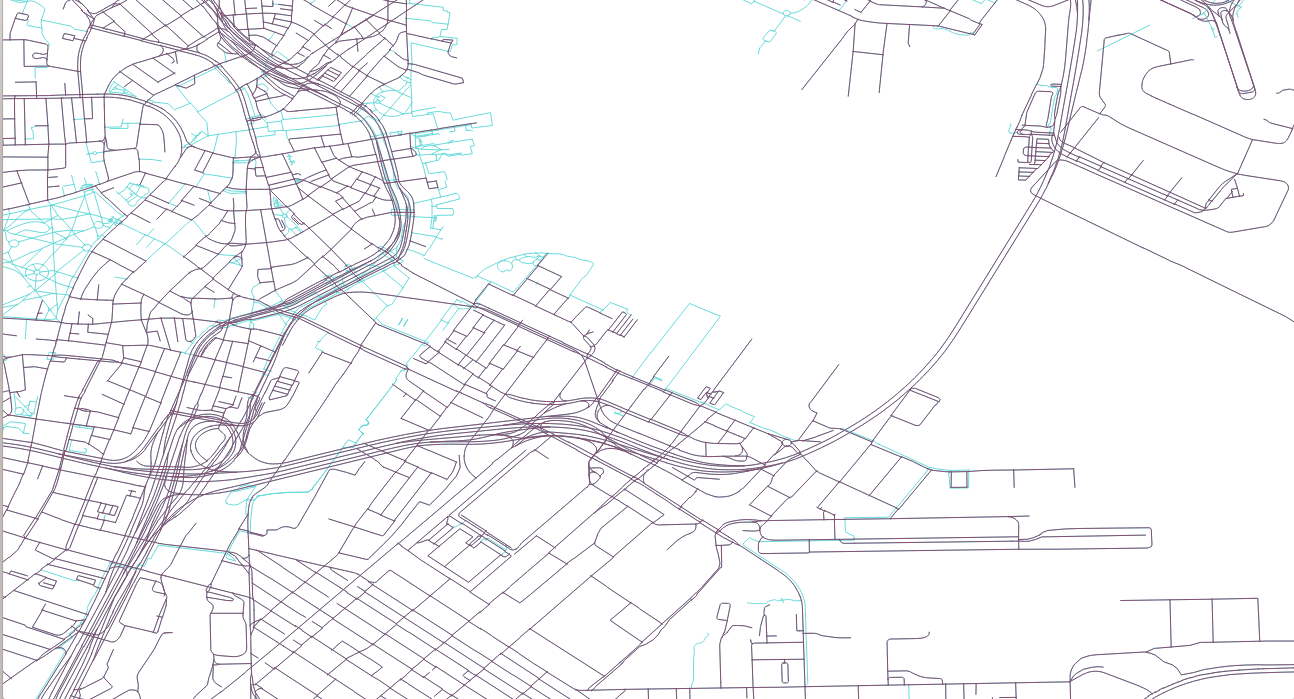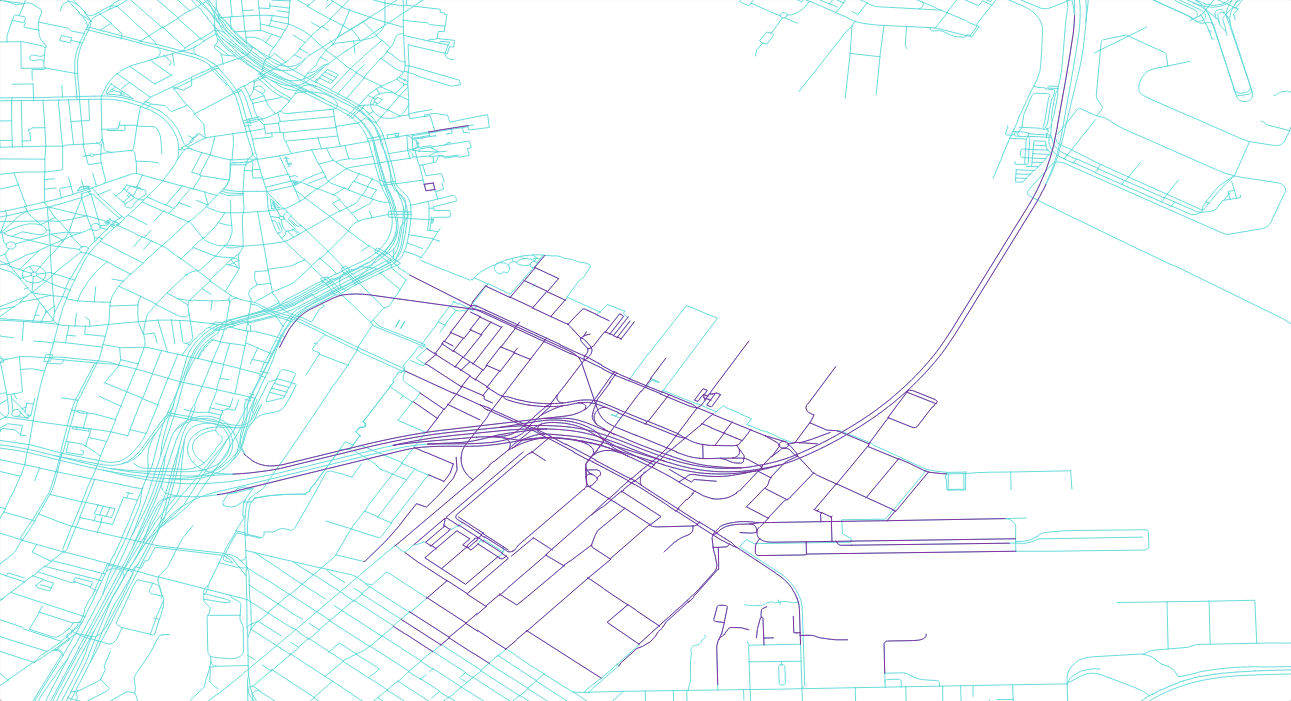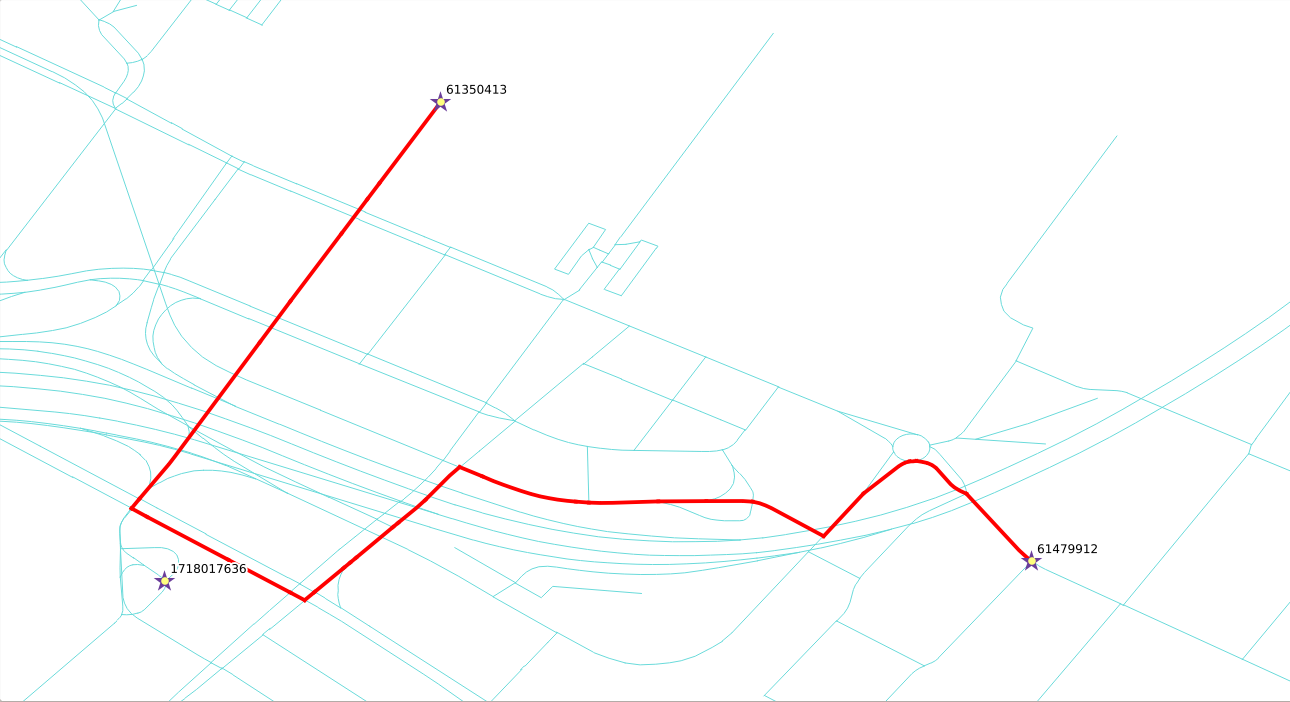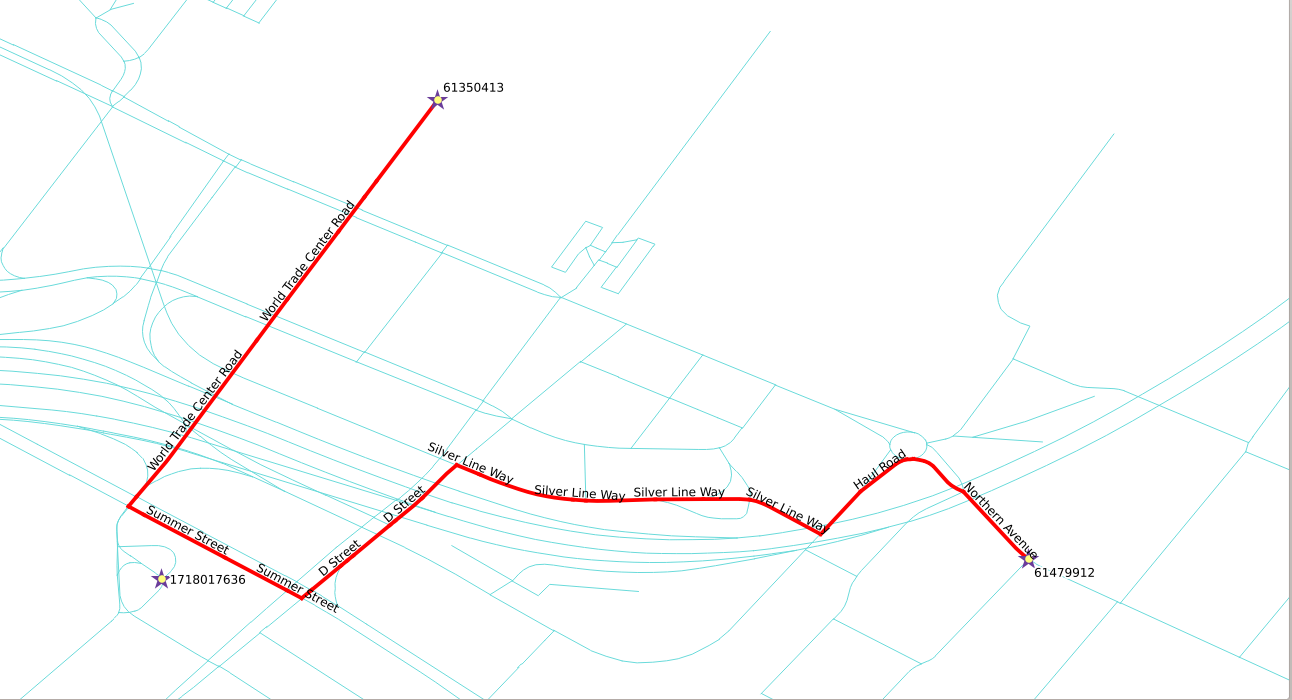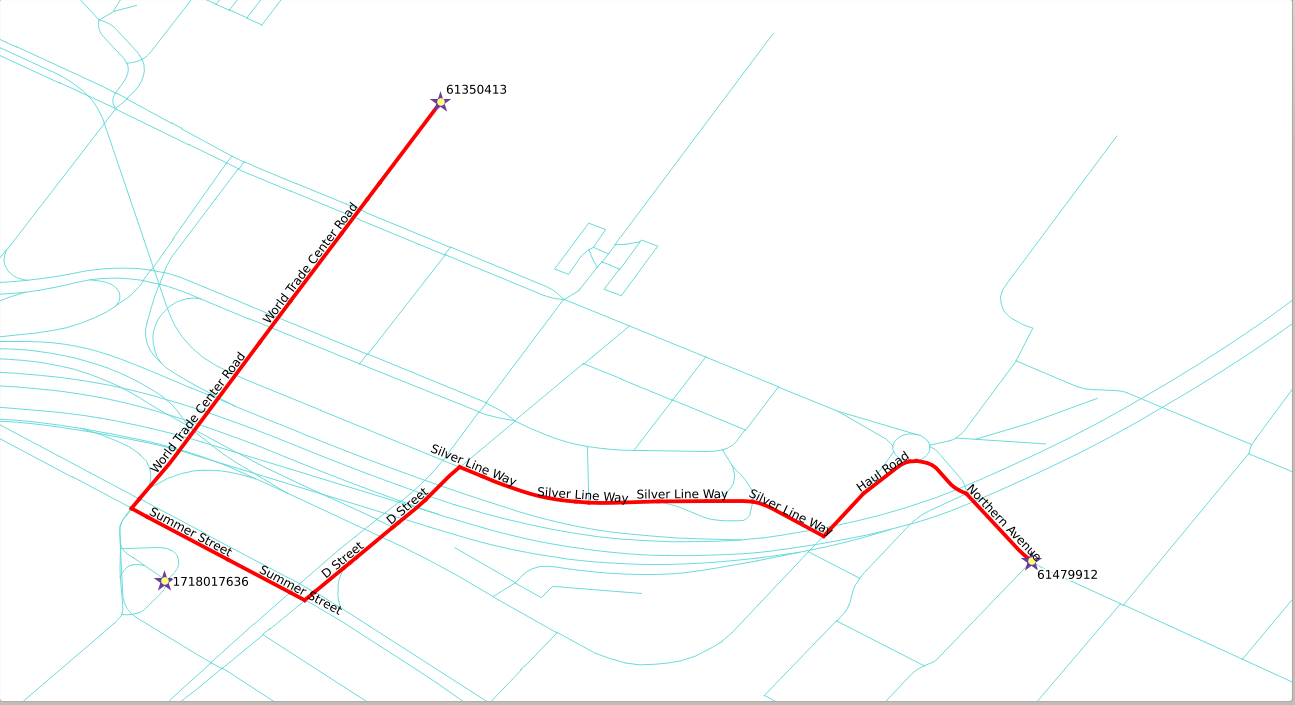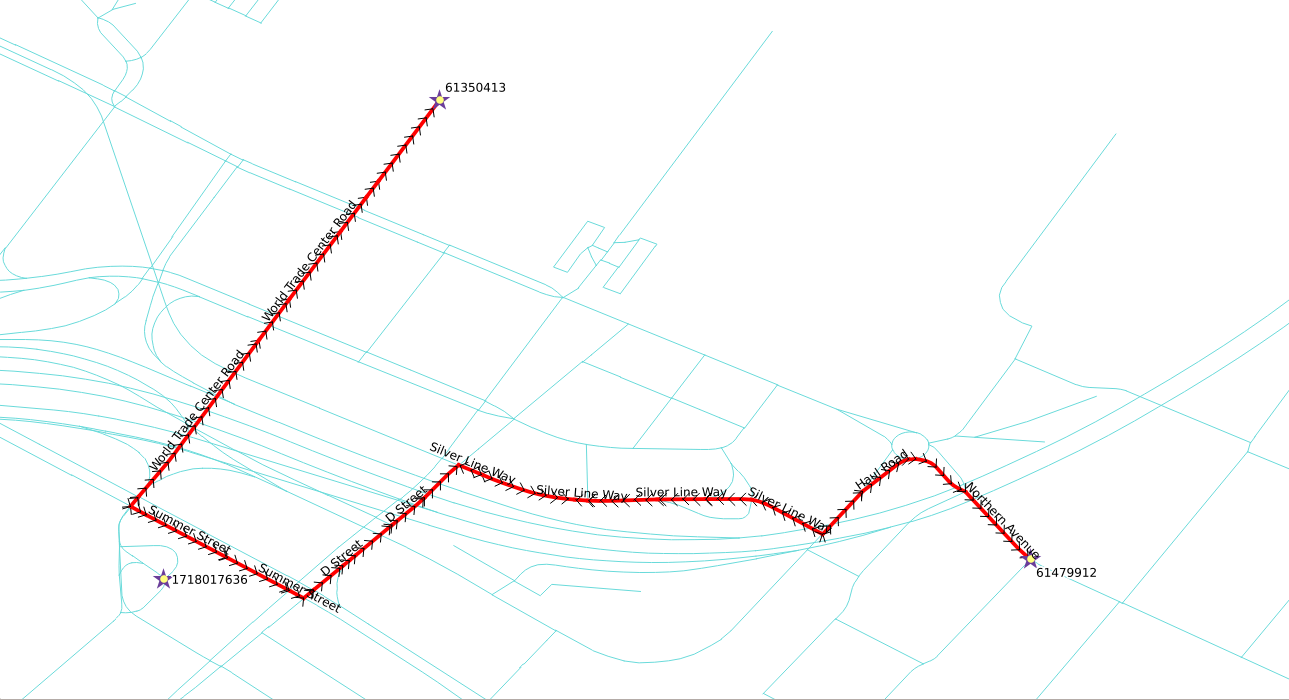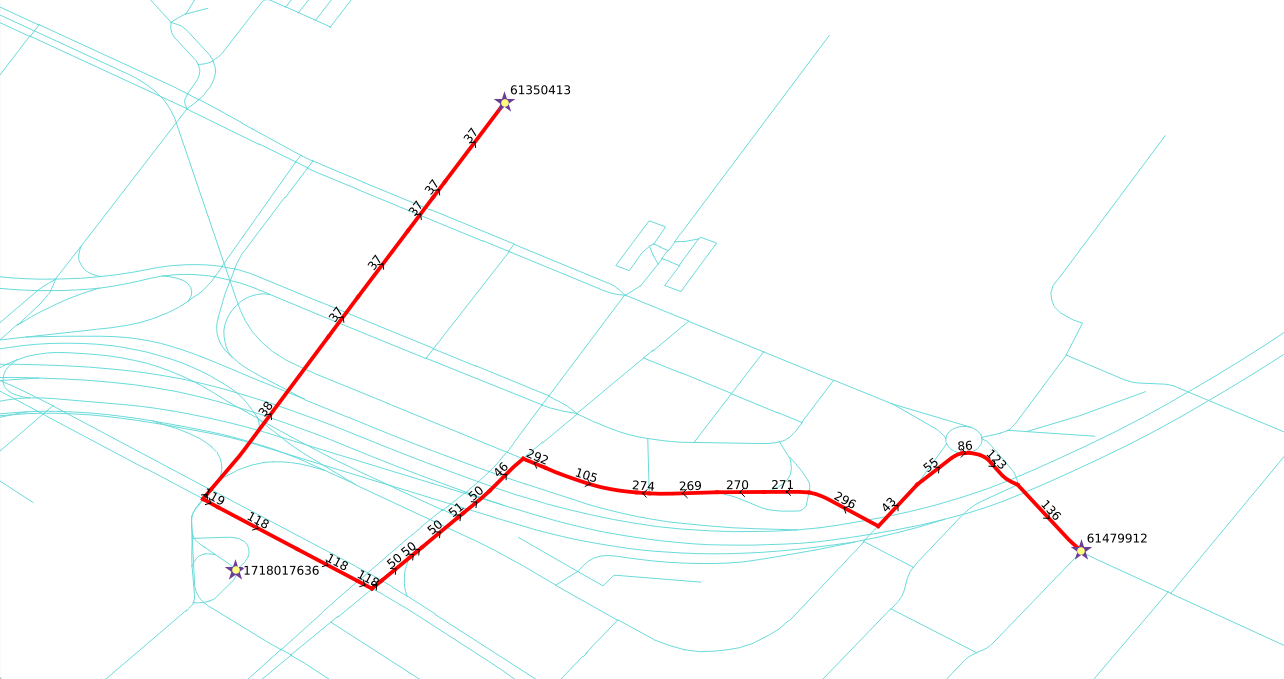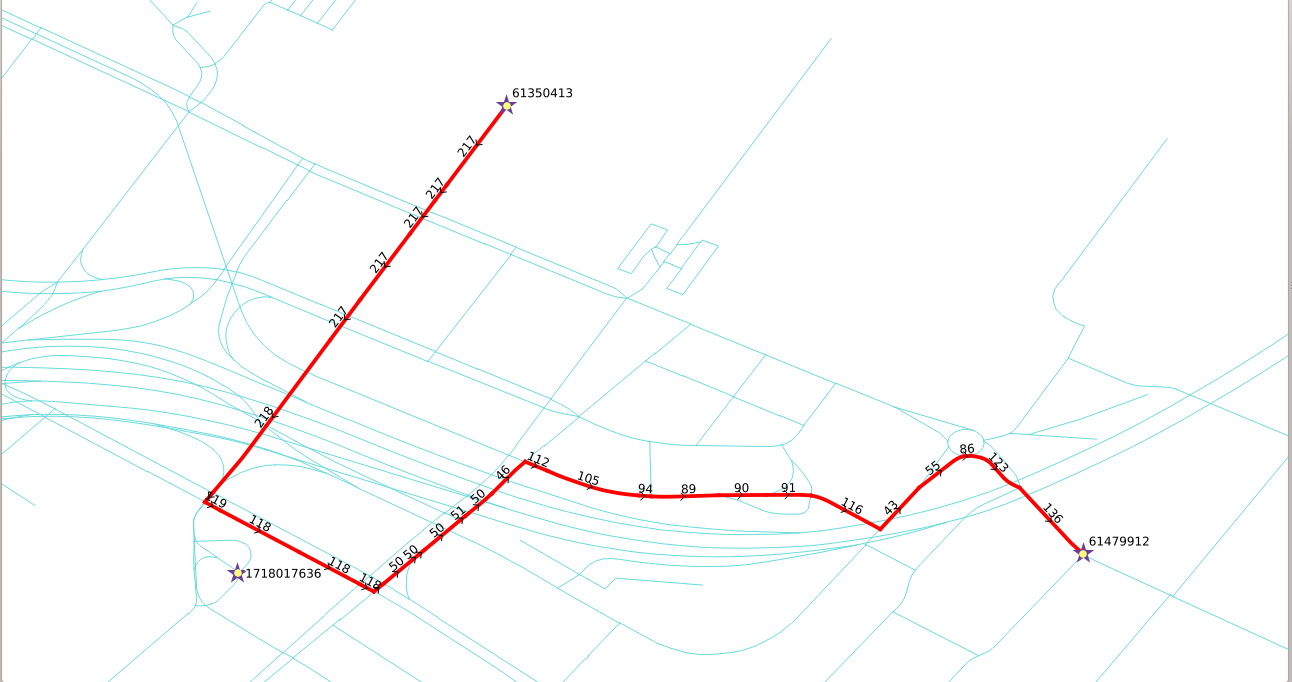--DROP FUNCTION wrk_dijkstra(regclass, bigint, bigint);
CREATE OR REPLACE FUNCTION wrk_dijkstra(
IN edges_subset regclass,
IN source BIGINT,
IN target BIGINT,
OUT seq INTEGER,
OUT gid BIGINT,
OUT name TEXT,
OUT cost FLOAT,
OUT azimuth FLOAT,
OUT route_readable TEXT,
OUT route_geom geometry
)
RETURNS SETOF record AS
$BODY$
WITH
dijkstra AS (
SELECT * FROM pgr_dijkstra(
-- using parameters instead of specific values
'SELECT gid AS id, * FROM ' || $1,
(SELECT id FROM ways_vertices_pgr WHERE osm_id = $2),
(SELECT id FROM ways_vertices_pgr WHERE osm_id = $3))
),
get_geom AS (
SELECT dijkstra.*, ways.name,
CASE
WHEN dijkstra.node = ways.source THEN the_geom
ELSE ST_Reverse(the_geom)
END AS route_geom
FROM dijkstra JOIN ways ON (edge = gid)
ORDER BY seq)
SELECT
seq,
edge, -- will get the name "gid"
name,
cost,
degrees(ST_azimuth(ST_StartPoint(route_geom), ST_EndPoint(route_geom))) AS azimuth,
ST_AsText(route_geom),
route_geom
FROM get_geom
ORDER BY seq;
$BODY$
LANGUAGE 'sql';


